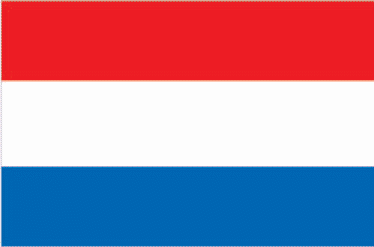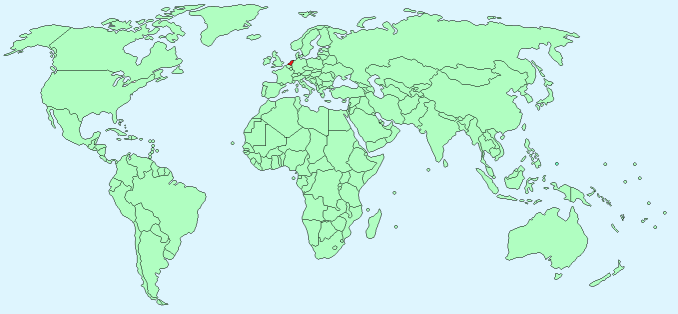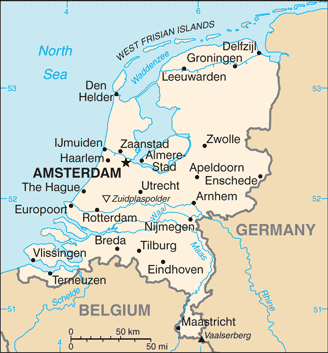Netherlands


Continent – Europe
Region – Western Europe, EU member
Territories – Aruba, Netherlands Antilles
Size – 41,543 km²
Geography – Mostly flat and reclaimed land, some hills to the south-east
Language – Dutch
Religion – Roman Catholic 28%, Protestant 19%, other 11%, none 42%
Monetary Unit – Euro
Natural Resources – natural gas, petroleum, peat, limestone, salt, sand and gravel, arable land
Agriculture – grains, potatoes, sugar beets, fruits, vegetables; livestock
Industry – agroindustries, metal and engineering products, electrical machinery and equipment, chemicals, petroleum, construction, microelectronics, fishing

Neighbouring Countries – Germany, Belgium
Population – 16,947,904 (2015)
Population Growth Rate – 0.41%
Average Life Expectancy – 81.23
Capital City – Amsterdam (population 1,084,000)
Highest Mountain – No mountains – highest point Vaalserberg (322 m)
Longest River – Rhine (1233 km in Netherlands, Germany, France, Liechtenstein, Austria, Switzerland)
Climate – warm summers 13°C to 22°C, cool winters 1°C to 5°C
Yearly Rainfall – 76 cm approx
Plant Life – oak, elm, pine, linden, beech, tulips, heather, marsh trefoil, juniper, orchid
Animal Life – fox, badger, beaver
Bird Life – seagulls, widgeon, barnacle geese, black grouse, black woodpecker
Harvard Reference for this page:
Heather Y Wheeler. (2015). Netherlands. Available: https://www.naturalhistoryonthenet.com/Facts_Figures/Country_Facts/netherlands.htm. Last accessed Tuesday, July 19, 2016
Facts and Figures Pages
